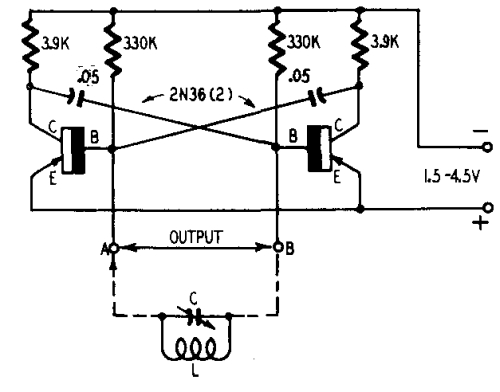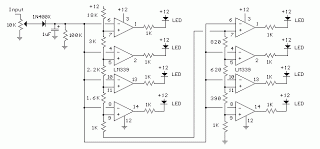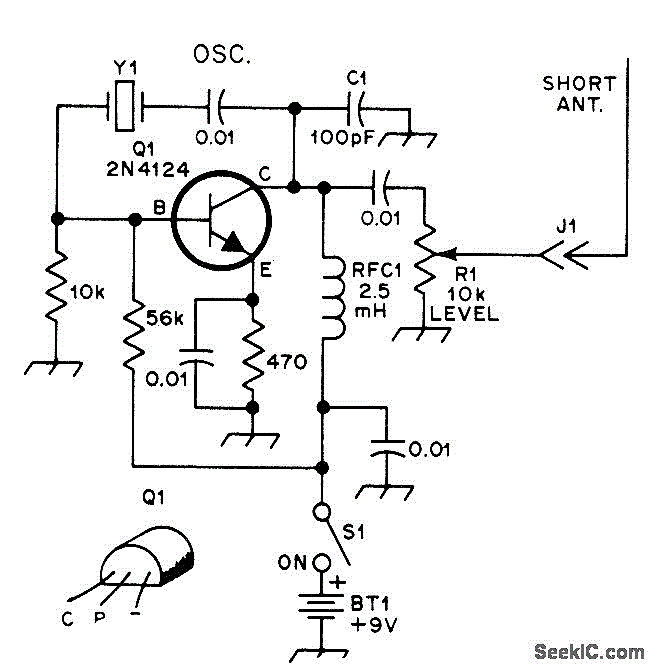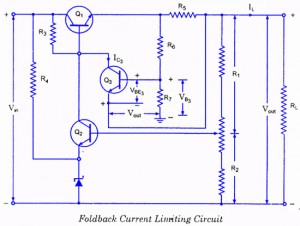
LED Torch Uses Blocking Oscillator
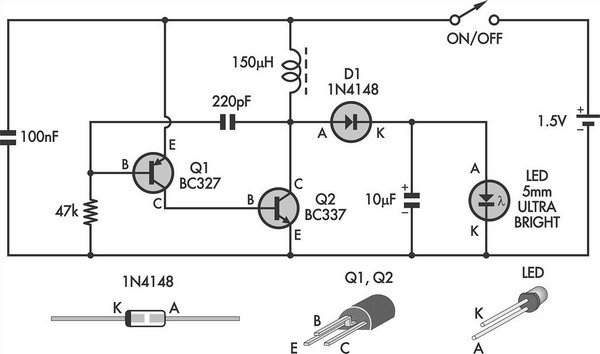
This simple LED torch is powered by a two-transistor blocking oscillator that increases the voltage from a 1.5V cell. It operates based on the inherent current limit.
The circuit utilizes a two-transistor configuration to create a blocking oscillator, which is a type of oscillator that generates a square wave output. This output is used to drive an LED, providing illumination. The oscillator's design allows it to operate efficiently with a low input voltage, making it suitable for battery-powered applications.
In this configuration, one transistor acts as a switch, while the other serves as a feedback element. When the circuit is powered on, the initial current through the first transistor causes it to turn on, allowing current to flow through the second transistor. This feedback loop continues until the energy stored in the circuit's inductor is released, generating a high voltage pulse that powers the LED.
The inherent current limit of the circuit is crucial for preventing damage to the components. By carefully selecting the resistor values and the characteristics of the transistors, the circuit ensures that the current remains within safe limits while still providing adequate brightness from the LED.
Additional components may include a small inductor, which is essential for energy storage and voltage stepping, as well as capacitors to stabilize the circuit and filter out any noise. The overall design is compact and efficient, making it ideal for portable lighting solutions. The simplicity of the circuit allows for easy assembly and troubleshooting, making it accessible for both beginners and experienced electronics enthusiasts.This simple LED torch is driven by a 2-transistor blocking oscillator which steps up the voltage from a 1.5V cell. It relies on the inherent current limit.. 🔗 External reference
The circuit utilizes a two-transistor configuration to create a blocking oscillator, which is a type of oscillator that generates a square wave output. This output is used to drive an LED, providing illumination. The oscillator's design allows it to operate efficiently with a low input voltage, making it suitable for battery-powered applications.
In this configuration, one transistor acts as a switch, while the other serves as a feedback element. When the circuit is powered on, the initial current through the first transistor causes it to turn on, allowing current to flow through the second transistor. This feedback loop continues until the energy stored in the circuit's inductor is released, generating a high voltage pulse that powers the LED.
The inherent current limit of the circuit is crucial for preventing damage to the components. By carefully selecting the resistor values and the characteristics of the transistors, the circuit ensures that the current remains within safe limits while still providing adequate brightness from the LED.
Additional components may include a small inductor, which is essential for energy storage and voltage stepping, as well as capacitors to stabilize the circuit and filter out any noise. The overall design is compact and efficient, making it ideal for portable lighting solutions. The simplicity of the circuit allows for easy assembly and troubleshooting, making it accessible for both beginners and experienced electronics enthusiasts.This simple LED torch is driven by a 2-transistor blocking oscillator which steps up the voltage from a 1.5V cell. It relies on the inherent current limit.. 🔗 External reference
